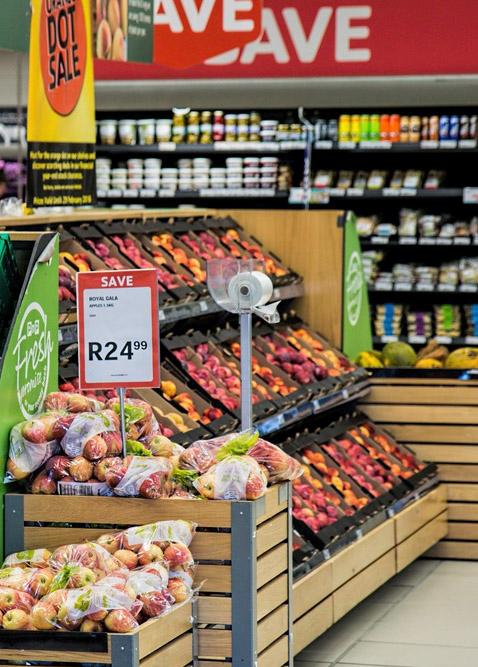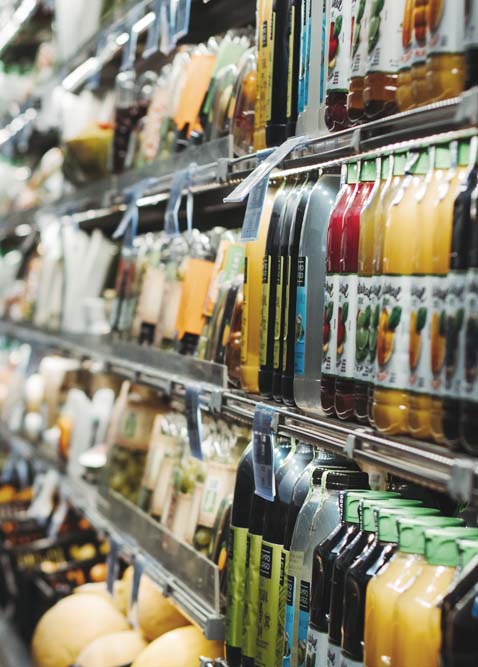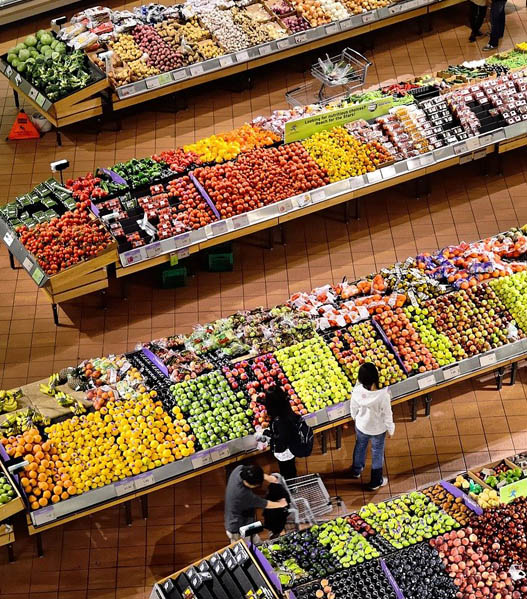How Data Science and AI are transforming Supermarkets
- In the following Blog post we will discuss how Data Science and Artificial Intelligence are transforming the consumer shopping experience and supermarket operations.
- Worldwide, the supermarket industry has become one of the most competitive with the entry of e-commerce platforms such as Amazon.com. Retailers need all the tools available to meet today's demand and handle large-scale data. Retail giants such as Wal-Mart, Aldi and Carrefour are among the largest retailers in the world and are investing heavily in data science and artificial intelligence to achieve operational efficiency, increase their profitability and competitiveness against new players in the market.
- The value of the data captured and analyzed brings benefits to all units of the organization, some examples are reviewed below:

Pricing
- Establishing an efficient pricing strategy for each product or category means finding the point on the elasticity curve that provides the highest profit, balancing the margin of each item with the number of sales, but we also need to take into consideration competitor prices and changes in the market.
- With fresh products, fruits and vegetables, the equation is a little different as they are items that cannot be harvested on demand. As soon as they leave the farmer's field, it's a race to get them on the shelves before they perish. The supermarket must predict the best price and maximize margin, avoiding product loss. For example, if 1 million lemons come in, you have to set a price that allows you to sell all of them in a timely manner.
- Data science and the use of algorithms make it possible to capture customer data and make forecasts and predictions of product demand in order to efficiently define the price and quantity of products.
Promotion
- Retailers receive information from their customers through their online and offline activities. Predictive analytics, using data collected from all contact points, relates it to actual purchases and helps retailers anticipate customer needs.
- Thus, it is possible to create customized promotions and loyalty programs that generate an increase in sales. Thanks to predictive analytics, a retailer is able to know the complete profile of its customers, their purchasing power and their behavior, in order to carry out promotional campaigns.


New Products
- When a product is new to the market, it is even more difficult to determine its price, promotion and positioning. New products require a large upfront investment in R&D, certifications, testing, production capacity, etc.
- New technological tools make it possible to estimate how successful a new product will be. The qualitative data collected is combined with quantitative market data to identify new products and estimate the size of the opportunity. The supermarket's own data can be used to complete the picture, analyzing customer loyalty to competitors' products, sensitivity to category promotions and the results of past new product launches.
- Once the product is launched, it is compared with the progress of other new items in the past, so that suppliers and supermarkets can make early decisions.
Stock Management
- Predictive analytics helps supermarkets eliminate uncertainty in inventory management by efficiently predicting item demand and suggesting better stock management strategies.
- Also, store owners can identify where to offer new products to increase revenue and mitigate inventory gaps. The result is a reduction in inventory costs, reduced the frequency of stock-outs and increased sales.

- Conclusion
- Supermarkets work with a huge volume of data from millions of transactions, so they can measure even very small effects with a high degree of statistical significance.
- But the complexity of studying a data set that includes a changing landscape of thousands of products, in hundreds of stores, purchased by millions of customers can be overwhelming. No two weeks are the same: there are holidays, changes in consumer behavior, economic conditions, new trends etc.
- Today, it is essential for supermarkets to have the necessary tools to capture internal and external data, analyze it and be able to make efficient decisions to improve their profitability and competitiveness.
- Learn more about the algorithms used in Prisma, and the value they bring to decision making that directly impact profitability improvement.

You may also be
interested in.
Marketing Team
Top 5 AI algorithms applied in retail
In the following Blog post we will analyze what Data Science is and what are the Top 5 algorithms applied in retail today.
Marketing Team
Are dark stores the future of retail?
In the United States, as a result of the pandemic, retailers were forced to expand their business through ecommerce, increasing the trend towards the creation of 'Dark Stores'.
Marketing Team
The 4 omnichannel challenges that retailers must solve
The current pandemic has retailers looking for investments to deliver an efficient omnichannel experience.
Marketing Team
How to extract the most value from your retail data
Nowadays, companies have a countless amount of data to process, both internal and external. The secret lies in analyzing the data correctly and making the right business decisions.
Marketing Team
Goodbye 2020: top 5 lessons you leave behind.
2020 has been a difficult year full of challenges for everyone. But it has left behind a series of learnings that every retail company should consider adding to 2021 strategic planning.
Victoria Hearne
Is your pricing strategy not working? These could be the 4 reasons
Choosing a pricing strategy is one of the biggest challenges for any business, as it is the result of complex calculations, research, understanding, and the ability to take risks.
Gustavo Sappia
Leading Colombian pharmacy chain implements Pricing and Space Planning modules
One of the leading pharmacy chains in Colombia, owning 960 stores nationwide and selling more than 20,000 products, pursued a digital transformation that would allow coping with typical retail problems and increasing its profitability.
Lucas Migliano
Common Retail Tech implementation objections
Let’s face it, all companies need to transform themselves in some part of their life cycle, however this doesn’t mean that implementing a new software or a new process should be easy.
Micaela M. Kulesz
COVID-19:
Let's buy it all NOW!
Fights, despair, anxiety, and many other emotions are being exposed in retail stores nowadays. We all have seen images and videos of consumers stocking (or stalking?) toilet paper and other goods in most countries hit by the COVID-19, suggesting the apocalypse of basic goods.
Micaela M. Kulesz
“Canastas de Alimentos” : listas para comprar en un solo click
Con el comienzo de la cuarentena sobrevinieron importantes cambios de hábitos en el comportamiento del consumidor. La principal tendencia observable, es la manera en que el comercio online fue ganando terreno por sobre las tiendas físicas.
Lucas Gorganchian
Price Perceptions, Consumer Choices and the Compromise Effect
António Damásio, in his book “Descartes' Error,” states that emotions both guide and bias behavior and decision-making. One of the examples he uses is called the Compromise Effect, a behavioral phenomenon by which customers often choose the mid-priced option to protect themselves from making a bad choice.
